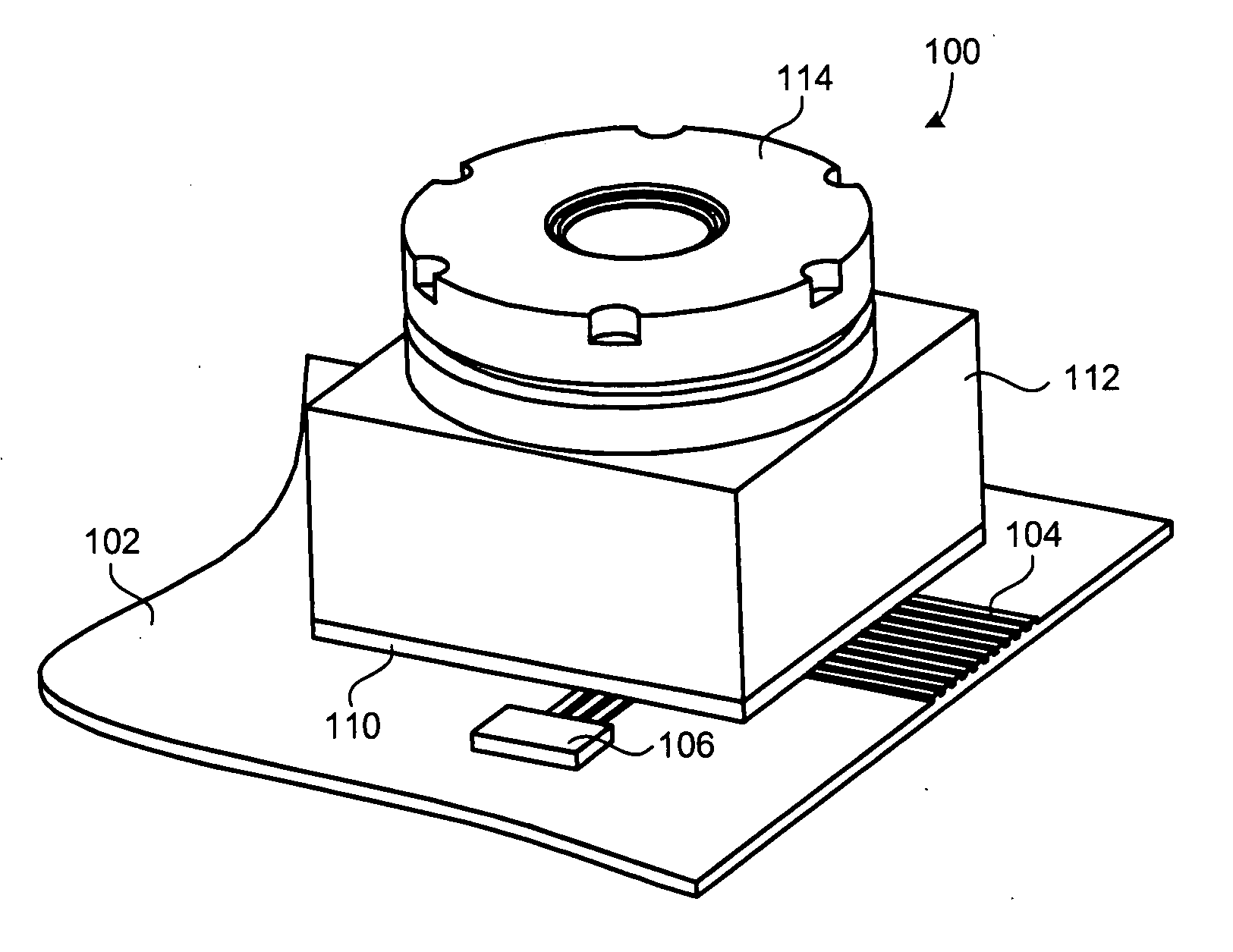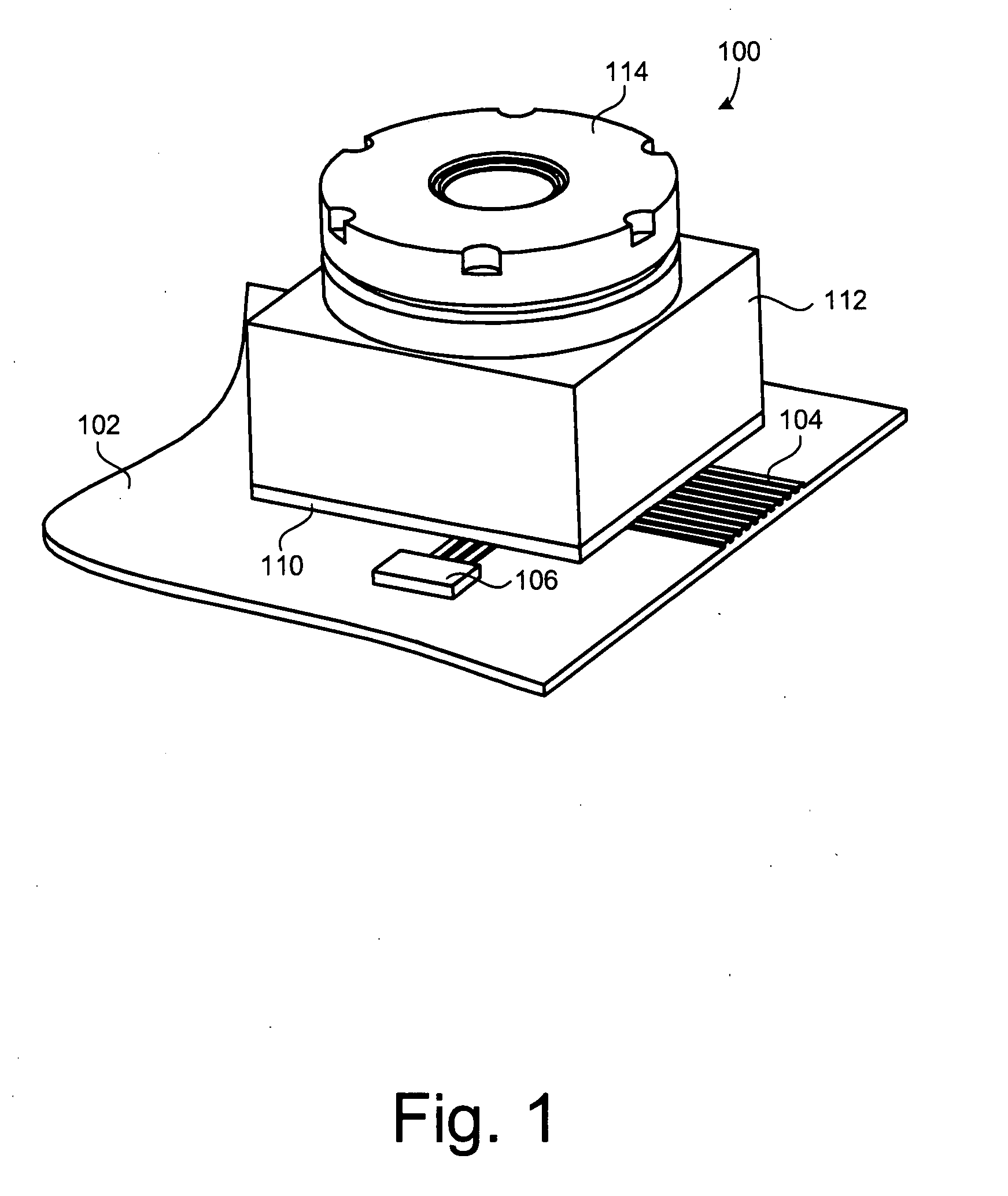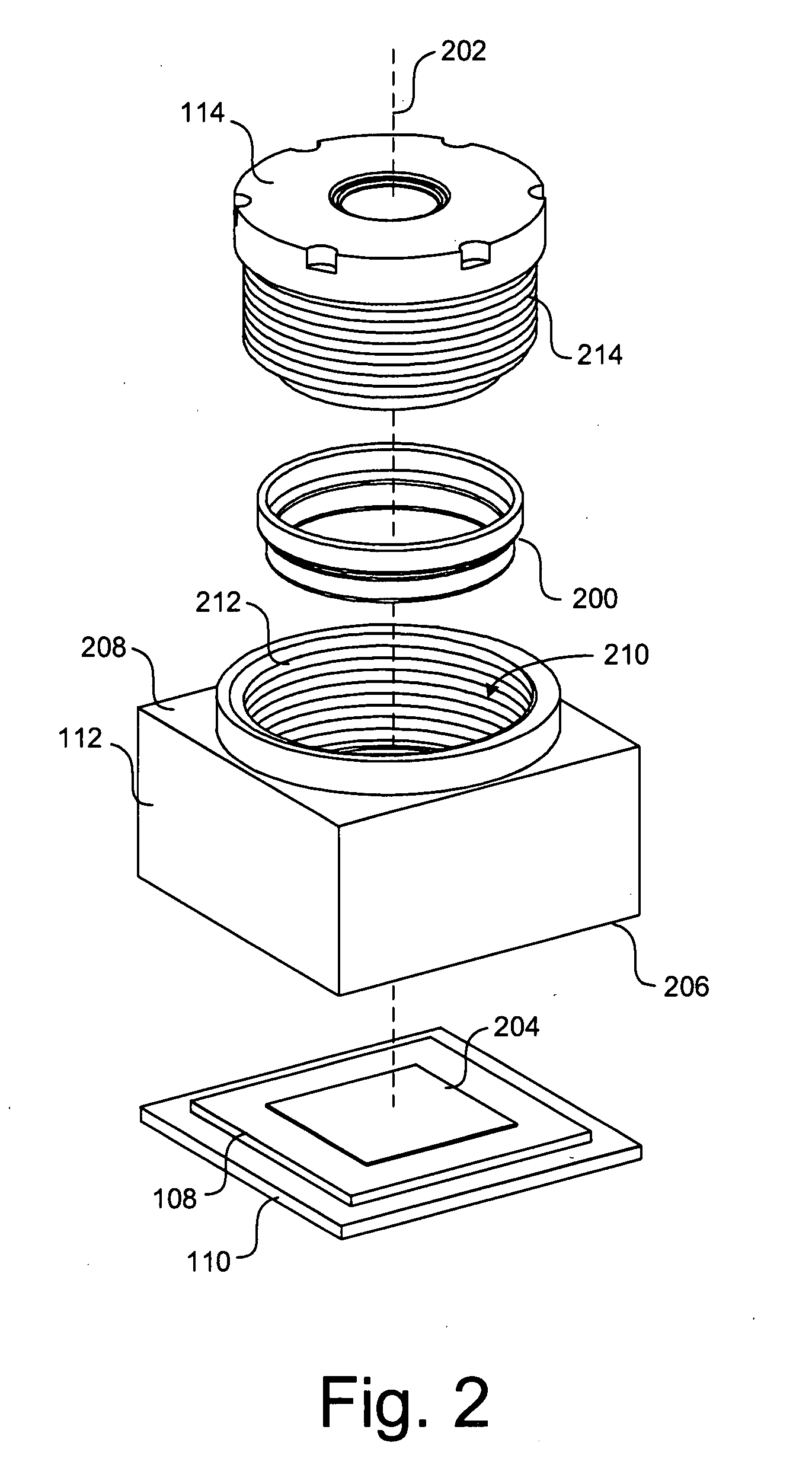Camera module with contamination reduction feature
a technology of camera module and feature, applied in the field of electronic devices, can solve the problems of reducing affecting the quality of captured images, so as to reduce the passage of contaminants, reduce the contamination of the image capture device, and limit contaminants
- Summary
- Abstract
- Description
- Claims
- Application Information
AI Technical Summary
Benefits of technology
Problems solved by technology
Method used
Image
Examples
Embodiment Construction
[0028]The present invention overcomes the problems associated with the prior art by providing a digital camera module including a boot disposed between the lens unit and the housing, so as to reduce contaminants entering the camera module, which might degrade the quality of images captured. In the following description, numerous specific details are set forth (e.g., particular examples of focus devices, substrate types, attachment devices, etc.) in order to provide a thorough understanding of the invention. Those skilled in the art will recognize, however, that the invention may be practiced apart from these specific details. In other instances, details of well known camera module manufacturing practices (e.g., automated focus processes, materials selection, molding processes, etc.) and components (e.g., electronic circuitry, device interfaces, etc.) have been omitted, so as not to unnecessarily obscure the present invention.
[0029]FIG. 1 is a perspective view of a camera module 100 ...
PUM
| Property | Measurement | Unit |
|---|---|---|
| perimeter | aaaaa | aaaaa |
| distance | aaaaa | aaaaa |
| outer perimeter | aaaaa | aaaaa |
Abstract
Description
Claims
Application Information
 Login to View More
Login to View More - R&D
- Intellectual Property
- Life Sciences
- Materials
- Tech Scout
- Unparalleled Data Quality
- Higher Quality Content
- 60% Fewer Hallucinations
Browse by: Latest US Patents, China's latest patents, Technical Efficacy Thesaurus, Application Domain, Technology Topic, Popular Technical Reports.
© 2025 PatSnap. All rights reserved.Legal|Privacy policy|Modern Slavery Act Transparency Statement|Sitemap|About US| Contact US: help@patsnap.com



